Learn how to cut cabbage the right way. From thin shreds to larger chops, cutting cabbage is easy when done correctly.
We have been piling up quite a few cabbage recipes and I understand it can be a challenging vegetable to prepare for many home cooks. Whether you are making thin shreds for Homemade Coleslaw, larger chops for Haluski, or even looking to tackle making your own Homemade Fermented Sauerkraut, this guide has got you covered!
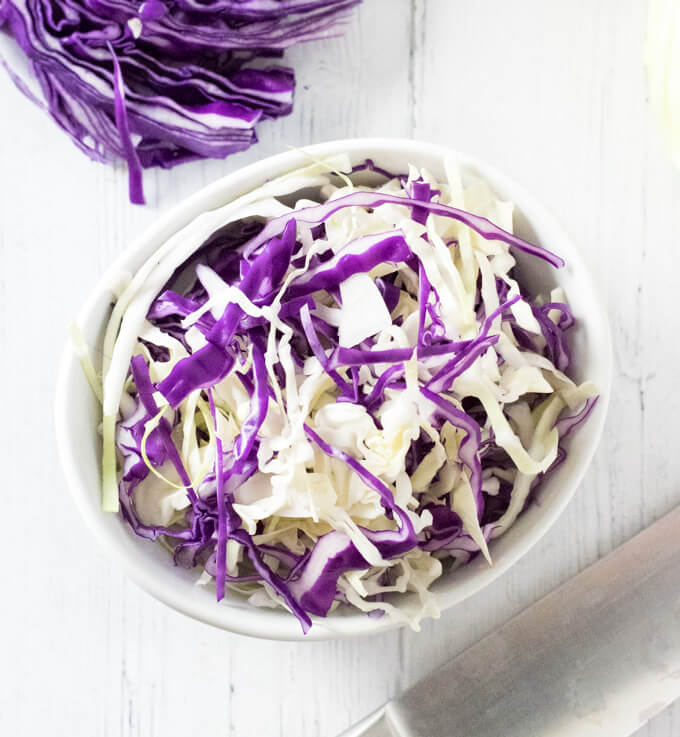
What is Cabbage?
Cabbage is a leafy vegetable in the brassica family, similar to lettuce, but featuring tighter leaves with a rubbery texture and a sweet taste. Common types of cabbage include red cabbage and green cabbage, which can each be used interchangeably, as well as napa, a Chinese cabbage, and savoy cabbage which each has noticeably looser leaves.
Cabbage is loved for its health benefits, and is commonly eaten raw in many dishes such as coleslaw. But unlike lettuce, cabbage also stands up well to cooking when included in popular dishes such as southern fried cabbage or in a stir fry.
How to Cut Cabbage
Let's cut to the chase. If you are looking for the quick and dirty explanation without having to scroll through an entire post, here is how you cut cabbage:
- Remove the outer cabbage leaves.
- Place the cabbage on a cutting board and cut the head in half, cutting through the core with a sharp chef's knife.
- Lay the flat side down and slice the cabbage halves into quarters, cutting through the core again.
- The core is now exposed in each wedge and can be cut out.
- Lay cut side down and slice into thin strips for slaw, or cut thicker for larger chops.
If you are a visual learner, I have the steps shown in more detail below with additional explanation.
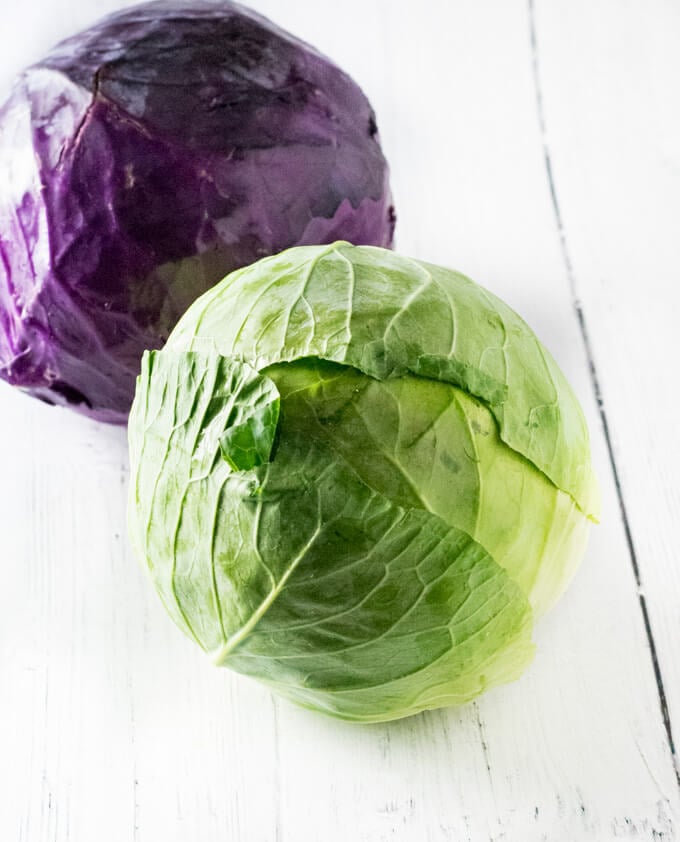
How to prepare the cabbage
Most cabbages purchased at grocery stores still have a loose outer layer of leaves on them (as seen above), making them appear like large Brussels sprouts. These can be removed and discarded until only the tightly wrapped head of the cabbage remains (as shown below).
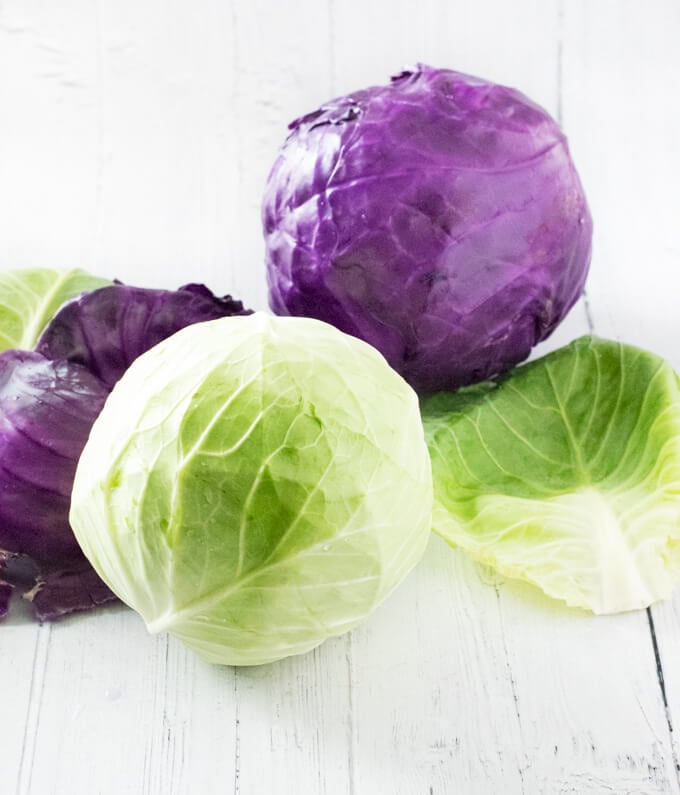
How to Cut Cabbage into Wedges
The easiest way to cut cabbage is to cut it into wedges. This exposes the core in the middle of the cabbage so it can easily be removed and makes it a more accessible size for slicing. The best way to do this is to slice through the whole head of cabbage, cutting through the hard stem, to give you two equal halves.
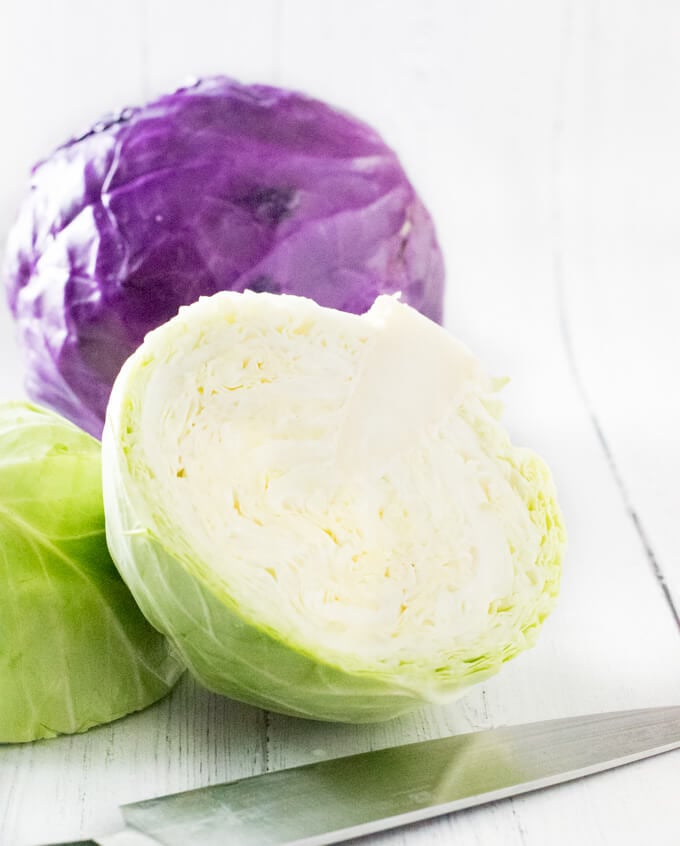
For the next step, lay the halves cut side down and cut in half again to make quarters. You now have wedges with the core exposed. Turn the cabbage wedges cut side up and slice out the core, cutting away from you.
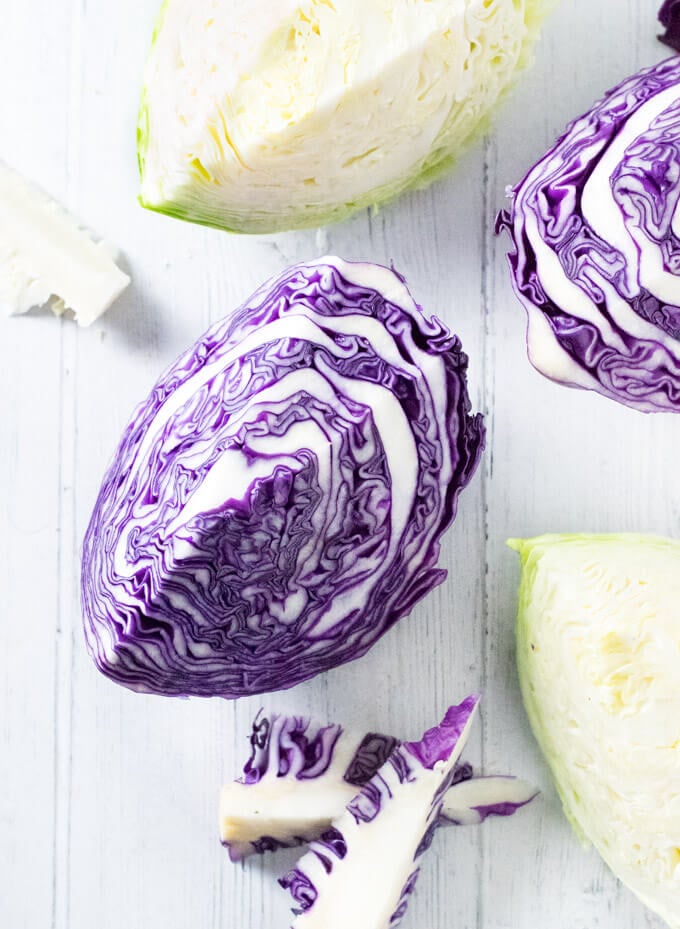
How to cut cabbage into strips
If you are making coleslaw or sauerkraut you will want thinly sliced cabbage. There are two ways of doing this. Using your large chef knife , place the wedges cut side down and take your time to slice into thin shreds while making uniform slices.
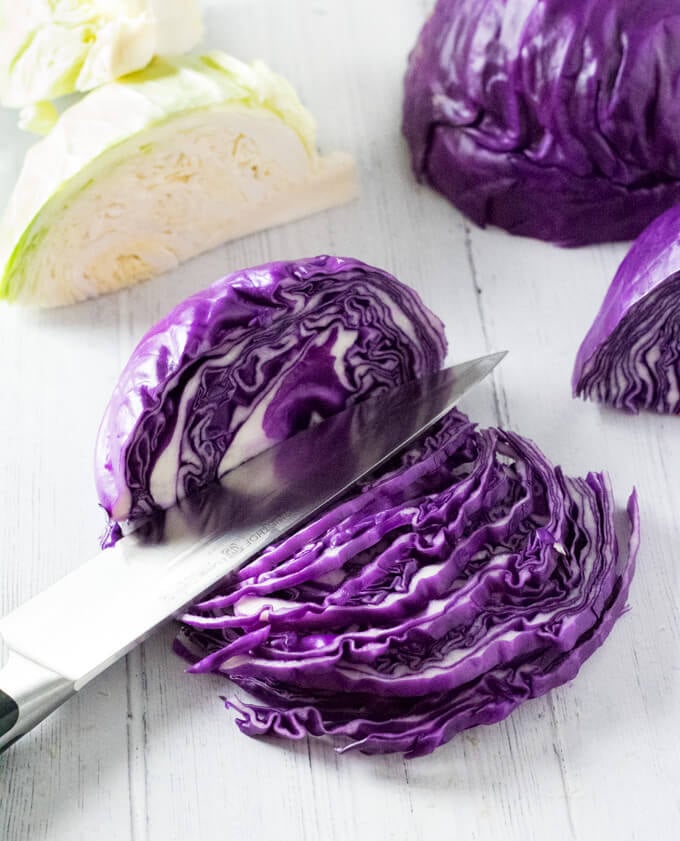
Alternatively, the quicker and more effective method is to use a mandolin. A mandoline cuts quicker, more evenly, and thinner. You get perfect long shreds every time, as shown in the photo below.
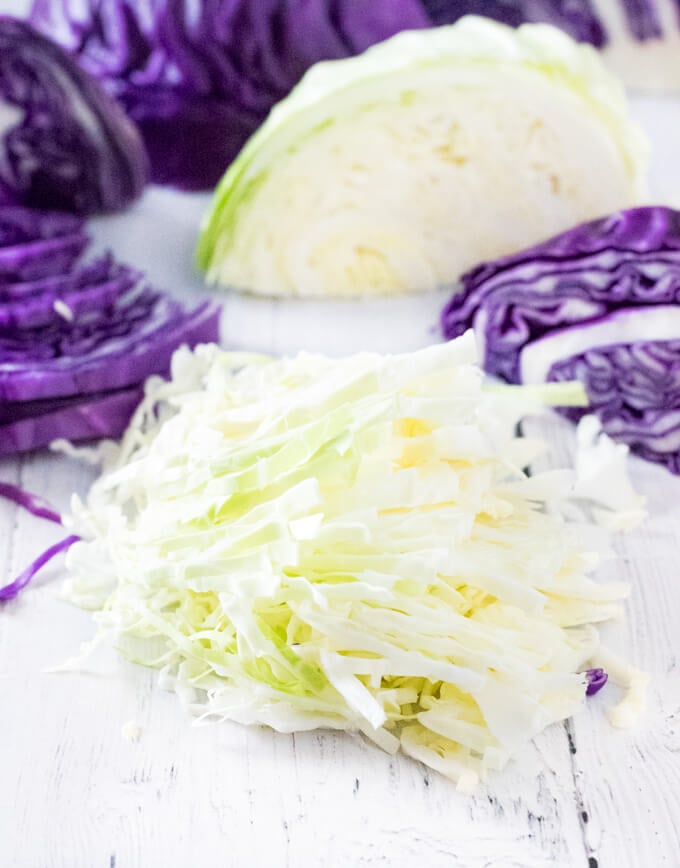
How to Chop Cabbage
Chopping cabbage is just like slicing or shredding cabbage, with just one additional step. Rather than thinly slicing the cabbage quarters, you will cut them into thick strips and then chop the strips into squares, as shown.
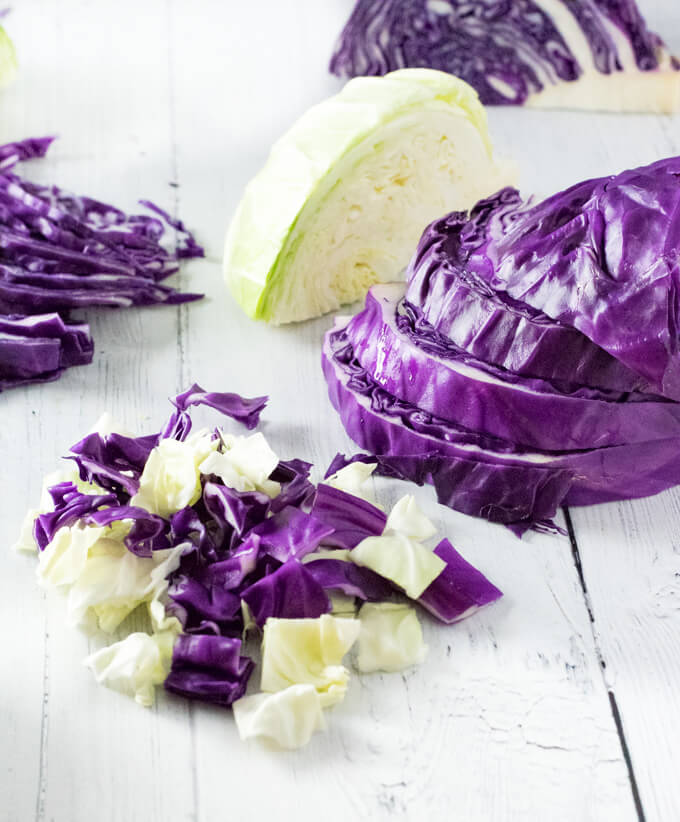
How to store cabbage
Cut raw cabbage leaves should be stored in the refrigerator in an airtight container or bag. Leftover cabbage can be stored for up to a week, depending on how fresh it was when prepared. If left whole, a head of cabbage can stay fresh for up to two weeks in your crisper drawer. And actually, in optimum root cellars, they can be stored for even longer!
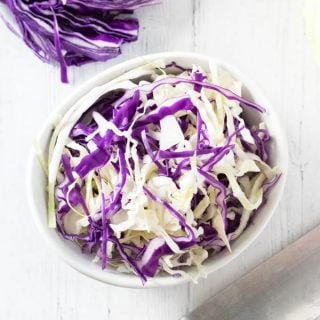
How to Cut Cabbage
Ingredients
- 1 whole cabbage
Instructions
- Remove the loose outer leaves from the cabbage head.
- Cut the head in half, cutting through the stem.
- Lay cut side down and slice the cabbage halves into quarters, cutting through the stem again.
- The core is now exposed in each wedge and can be cut out. To do so, lay the wedges cut side up and slice out the core, cutting away from you.
- Lay cut side down and slice thinly for slaw, or cut thicker for larger chops.
Notes
Nutritional Information
This was originally published on November 14, 2019 on FoxValleyFoodie.com.


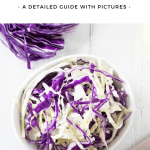
Vicki
Thanks so much for information, I've never seen anyone ever post it before!